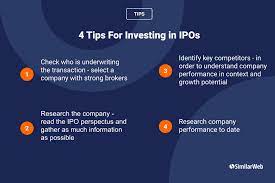Introduction:
In recent years, a revolutionary concept has taken the world of cryptocurrency by storm – DeFi, short for Decentralized Finance. DeFi refers to a diverse set of financial services and applications built on blockchain networks, aiming to eliminate intermediaries and give individuals more control over their financial transactions. This article will delve into what DeFi is all about and why it has become a game-changer in the crypto space.
What is DeFi?
DeFi encompasses a wide range of decentralized financial products and services that are based on smart contracts. These applications are typically built on open-source blockchain platforms like Ethereum, offering transparent and accessible financial solutions to users worldwide. With DeFi, traditional intermediaries such as banks, brokers, or insurance companies are replaced by smart contracts, enabling peer-to-peer transactions without centralized control.
Key Features of DeFi:
- Trustless Transactions: DeFi platforms utilize smart contracts, which allow for secure and automated transactions without the need for intermediaries. This eliminates the need to trust a centralized authority, as the blockchain enforces the agreed-upon terms.
- Open and Transparent: DeFi applications are built on public blockchain networks, making all transactions and contracts viewable by anyone. This transparency fosters trust and allows users to verify the integrity of the platform.
- Accessibility: DeFi platforms are open to anyone with an internet connection, making financial services accessible to unbanked or underbanked populations around the world. Users can participate in lending, borrowing, trading, and other financial activities without relying on traditional gatekeepers.
- Financial Inclusion: DeFi offers opportunities for individuals who may not have access to traditional financial services. It enables them to earn interest on their assets, access loans without credit checks, and engage in other financial activities that were previously out of reach.
Popular DeFi Applications:
- Decentralized Exchanges (DEX): DEX platforms, such as Uniswap and SushiSwap, facilitate peer-to-peer trading of cryptocurrencies without the need for intermediaries. These platforms use liquidity pools and automated market-making algorithms to provide efficient and trustless trading services.
- Lending and Borrowing Protocols: DeFi lending platforms, including Compound and Aave, allow users to lend their digital assets and earn interest, or borrow assets against their collateral. The interest rates are determined algorithmically, based on supply and demand, rather than being set by a centralized authority.
- Stablecoins: Stablecoins, such as Tether (USDT) and MakerDAO’s DAI, are cryptocurrencies that aim to maintain a stable value by pegging it to a reserve asset, such as the US dollar. Stablecoins play a crucial role in DeFi by enabling users to hedge against volatility and provide liquidity in decentralized markets.
Conclusion:
DeFi has emerged as a groundbreaking movement within the cryptocurrency ecosystem, offering a decentralized and inclusive alternative to traditional financial systems. By leveraging the power of blockchain technology, DeFi platforms empower individuals and redefine the way we participate in financial activities. As this sector continues to grow, it opens up new possibilities for financial freedom and innovation worldwide, shaping the future of finance as we know it.

